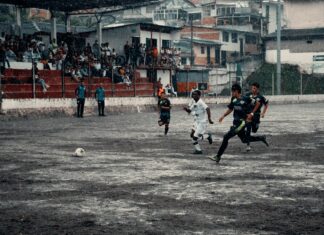The Basis of the case from the former Minneapolis police officer charged with murdering George Floyd is a mountain of video proof, but demonstrating that to jurors is not as easy as pushing play
CHICAGO — The basis of the case from the former Minneapolis police officer charged with murdering George Floyd is a mountain of video proof, but demonstrating that to jurors is not as simple as pushing play.
Over and above, prosecutors have revealed video from surveillance cameras, bystanders’ cellphones and authorities body and dashboard cameras, and also have requested witnesses to annotate footage or photos and narrate the actions on screen.
Massive frames or screens are fixtures of contemporary courtrooms, alongside applications very similar to PowerPoint made for court presentation of movies, photographs and other signs. However, the quality of the technology and lawyers’ use of this changes.
The court used for Derek Chauvin’s trial would be the biggest and only one at the Hennepin County courthouse armed with all the resources to present and annotate video and other visual proof.
Jurors can see signs on three screens.
A touchscreen monitor is set in the witness stand. Prosecutors have been requesting witnesses to ring themselves point out details with a stylus.
Hennepin County Judge Peter Cahill includes a track at his seat, and he is ready to control every time a watch’ annotations are observable to the court.
They’ve utilized a picture-in-picture attribute to play mobile movies of Floyd and the officers with a uninterrupted feed of their road by a surveillance camera, providing jurors an opinion from several viewpoints and clarifying the circumstance of their bystander videos.
The defense has to start presenting its case however Chauvin’s lawyer, Eric Nelson, has signaled that he’ll even rely on video proof to reveal his client isn’t guilty.
Cahill and the lawyers also utilize a system of cans and cans that lets them talk privately and stay socially distanced, rather than coming to the judge’s seat.
The pandemic has compelled many courts to rapidly adopt technology, and some expect those favorable experiences will inspire attorneys to utilize technology tools as they come back to courtrooms.
But a lot of attorneys do not have adequate time and tools to prepare a demonstration to the degree of detail found from the Chauvin instance, stated Jessica Silbey, a professor in the Boston University School of Law.
Michael Moore, the Beadle County State’s Attorney in southern South Dakota, said price is the very best hindrance for many lawyers, followed by distress.
Moore stated he regularly uses software to make timelines, display files and other visual signs in cases. He believes it is easier for jurors to follow his own discussions and it saves time in trial in contrast to old fashioned handouts of documents or photos.
But more often than not, Moore stated, courtrooms aren’t”wired” for attorneys who adopt such tools. Moore brings his very own flat display monitor to a trials to make sure jurors have a fantastic view.
It is hard to understand how many courthouses from the U.S. can adapt such technologies.
Prosecutors made no secret of the approach to maintain jurors’ concentrate on video proof shooting Chauvin’s actions. During opening statements, prosecutors played with the complete video of this experience and highlighted the officer pushed his knee Floyd’s neck for 9 minutes, 29 seconds.
Lawyers arguing that a case involving crucial video proof can’t presume that everyone sees it through exactly the identical lens. Silbey said. They must concentrate jurors’ attention by slowing down footage, circling or highlighting an occasion, and narrating what’s occurring.
“Lawyers make an error if they presume people see what they see and the movie speaks for itself,” Silbey said.
People today know and recall information more readily when it is accompanied with a visual help, Lederer said.
“Presenting information visually empowers judges and jurors to understand what is happening,” he explained. “And by a lawyer’s perspective, when you’ve got good proof, then you can convince far better ”
Lawyers must walk a stiff line, however.
“Visual aids like PowerPoint presentations have to adhere to the very same criteria as guides’ spoken phrases,” the opinion read.






















